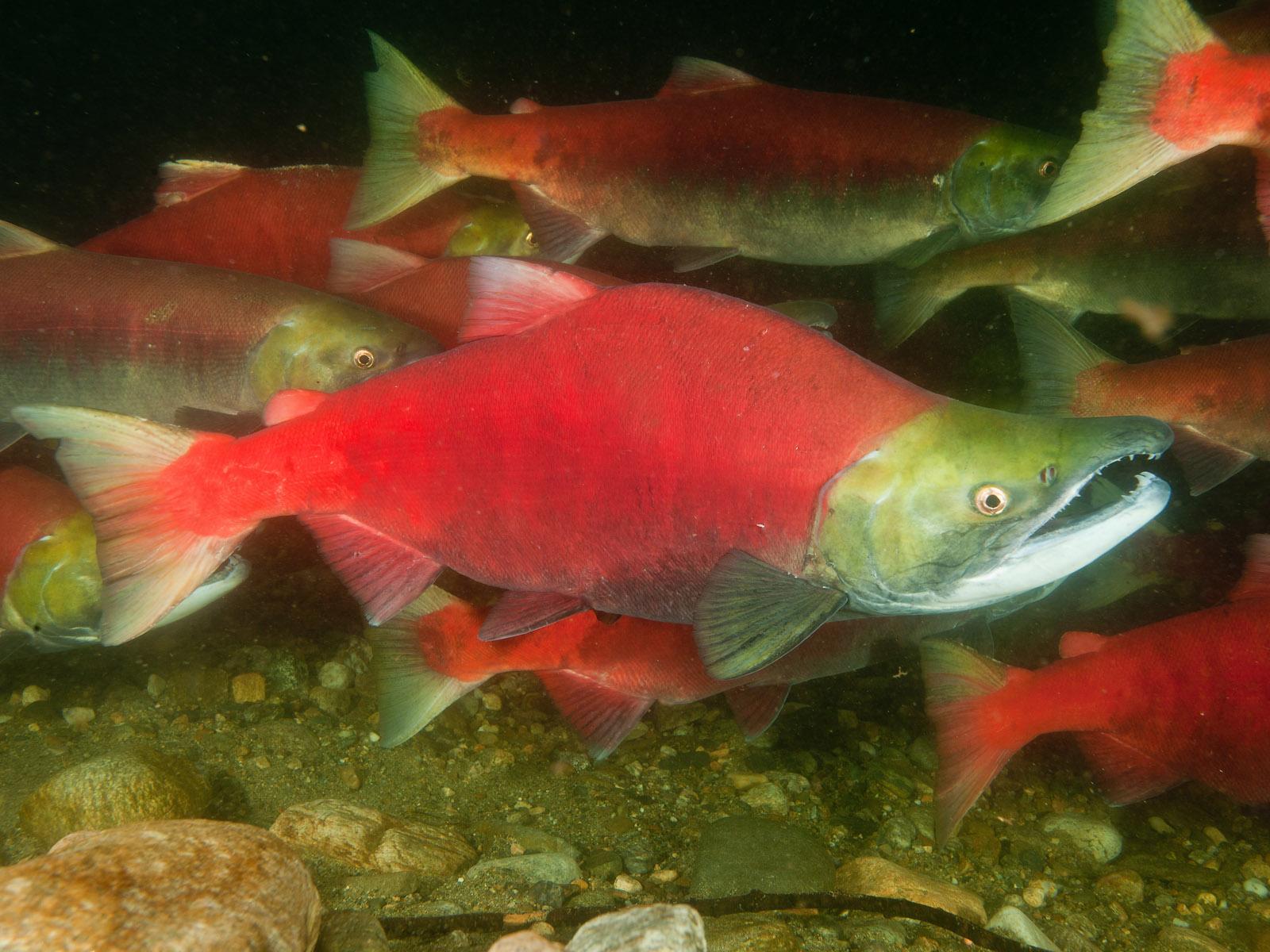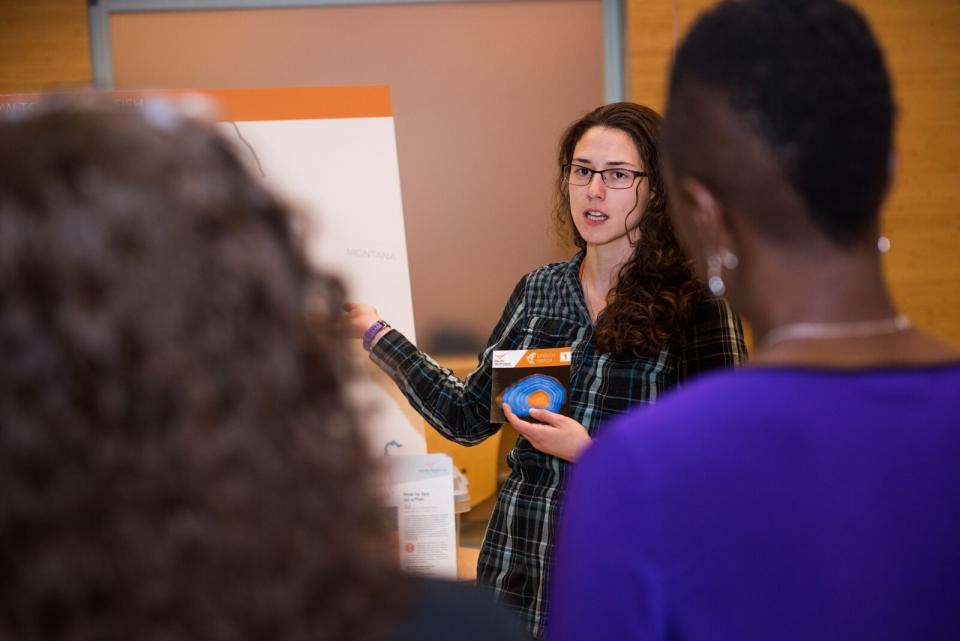PNNL Fish Scientists are Getting an Earful From this Research

Researchers at PNNL are studying tiny ear bones of fish to learn about their migration. Matching the chemistry of various bodies of water with the chemistry incorporated in the concentric rings that form the ear bones over a fish's lifetime reveals information about where the fish has been.
© Beat J Korner | Shutterstock.com
We all have heard our share of fish tales, but did you know that how fish hear can tell a story of their lives?
Truth be told, scientists at the Department of Energy's Pacific Northwest National Laboratory are studying the ear bones of fish, called otoliths, to learn about the travails of fish migration in order to better protect them.
These bones — no larger than a fingernail — provide information about where a fish was born and has lived, as well as what it has been exposed to along the way.
Utilities, tribes and fish and wildlife agencies use this information to make decisions about conservation and management of Pacific salmon and other species.
Much like the rings on a cross-section of a tree trunk, a fish's otolith has bands that correspond to its age.
Each annual band comprises a collection of tiny rings that form every day. As they form, the rings incorporate elements from the water around them, like how our bones absorb calcium from milk.

Studying ear bones or other hard parts of fish is not new in fisheries research. However, PNNL's multidisciplinary approach allows scientists to dive deeper by combining fisheries knowledge with expertise in biology, geochemistry and analytical chemistry, as well as access to advanced instrumentation.
For example, researchers can determine a fish's birthplace using an analytic technique known as mass spectrometry by comparing the chemistry at the center of the otolith with the chemistry of different bodies of water.
This is possible because every river has a unique chemical signature based upon its underlying geology.
With support from the Colville Confederated Tribes, researchers used this approach to study otoliths of Kokanee in Lake Roosevelt, with the goal of pinpointing specific spawning areas within the lake's nearly 125 square miles.
The tribes want to know where fish are born so they can take steps to protect these important spawning grounds.
Researchers also are using otoliths to distinguish hatchery fish from wild fish.
By estimating the proportion of hatchery to wild fish in a population, researchers can help determine the right mix for stocking fish in a given area to provide sport fishing opportunities while minimizing competition among hatchery fish and native populations.
Along similar lines, PNNL has worked with Montana Fish, Wildlife and Parks to examine otoliths of invasive species that prey upon young salmon. Knowledge about an invasive species' origin and how long it has been inhabiting a certain area can inform mitigation measures, as well as shape education and enforcement efforts.
As a fish leaves its birthplace, the chemical makeup of its accumulating otolith bands can be associated with particular bodies of water to provide a life-long record of where the fish has been. This is especially useful for Pacific salmon that adapt to a specific river's environment.
When researchers look at fish from the Columbia River, for example, they can use the chemical signature in the otolith to determine whether it came from the Snake, Yakima or other tributaries.
As they understand how each river contributes to the overall population, they can identify where fish thrive and help preserve that critical habitat.
In other research, PNNL scientists are using otoliths to determine when and where a chemical exposure may have occurred.
They also are examining the relationship between water temperature and the composition of different isotopes of oxygen in the fish's ear. These studies explore the long-term effects of climate change and predict how global warming may impact habitat.
Studying the ear bones of fish may seem esoteric, but it is a great example of the ingenuity and innovation that PNNL brings to all kinds of challenges. In this case, you really can believe the fish tales we tell.
Steven Ashby, director of Pacific Northwest National Laboratory, writes this column monthly. His other columns and opinion pieces are available here.
Published: May 18, 2020